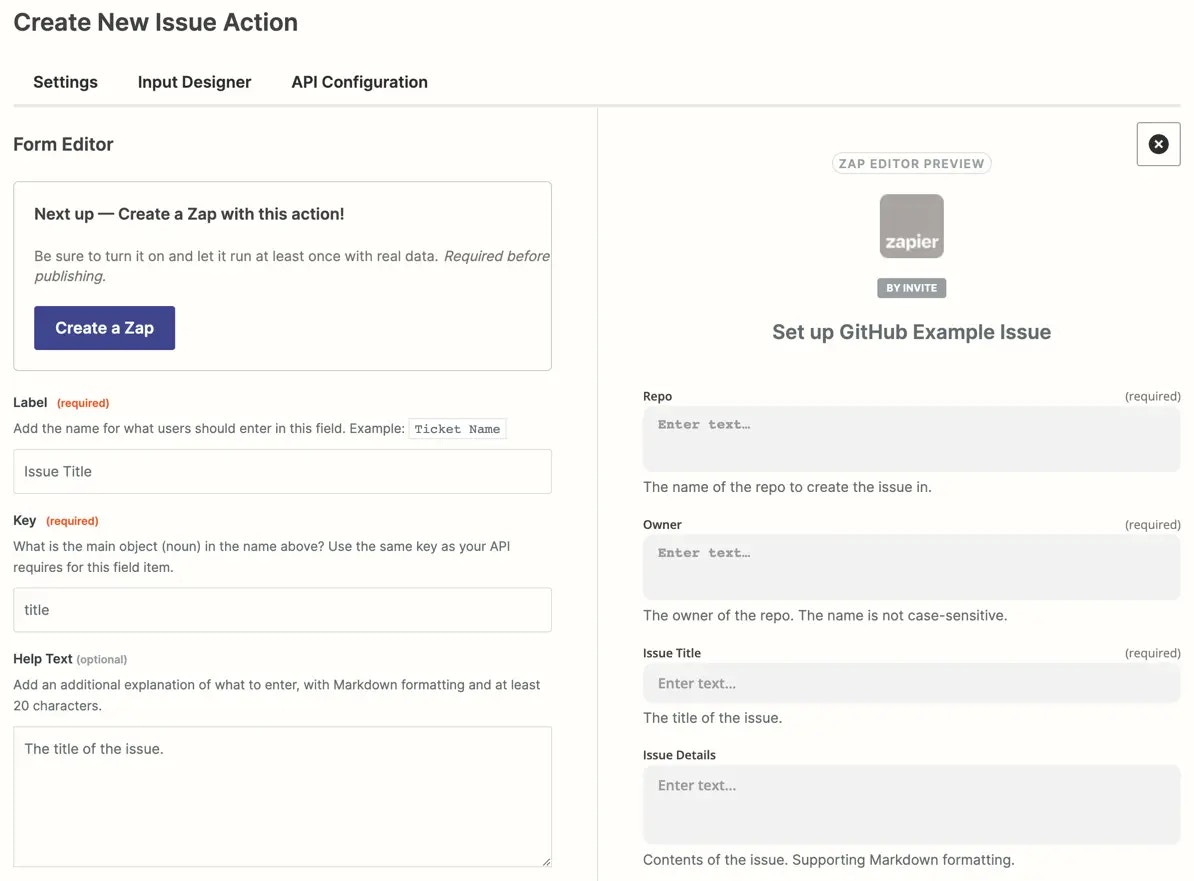
- Add an input field to a trigger or action
- Set field options
- Reorder input fields
- Remove input fields
Add an input field to a trigger or action
- Log into the Platform UI.
- Select your integration.
- In the Build section in the left sidebar, click on your trigger or action.
- Click the Input Designer tab.
- For triggers, click Add User Input Field. For actions, click Add and select Input Field.
- In the Form editor, add in details about your input field:
- Key: A unique identifier for the field, without spaces, ideally with the same key as your API, such as
first_name. - Label: A user friendly name for the field, such as
First Name. - Help Text: (optional) A 20 character or longer description that appears under the field label, with Markdown formatting. Do not include redundant help text in input fields that repeats the name of the field. Use field help text to tell users what to do, for example “Choose the directory to watch for new files”. Always use active voice.
- Type: From the dropdown menu, select type of data you want user’s to enter. Learn more in field definitions and types:
- String
- Text
- Integer
- Number
- Boolean
- DateTime
- Password
- Dictionary
- Default Text: (optional) Value to include in the field if the user leaves it blank; only include if this value would work for API requests made to every user’s account.
- Options (optional):
- Select the Required checkbox to make it mandatory for users to add data into this input field.
- Select Allows Multiples checkbox if you want users to add multiple enteries into the same input field.
- Select Alters Dynamic Fields to have Zapier automatically recompute any dynamic fields any time this field is changed.
- Select Dropdown 7. Once you’ve finished adding details for your input field, click Save.
Setting field options
Required
An email app like MailChimp requires an email address to add a new email subscription, and a calendar app like Google Calendar requires an event title, date, and time to add new events. Check the Required option on those fields if your trigger or action step requires any data to make the API request. Zapier will show a red(required) label beside the field name in the Zap editor, and will not let users complete the Zap step without adding data to that field.

Allows multiples
If users could add multiple entries in the same field, check the Allows Multiples option.
Alters dynamic fields
For each dynamic field in your integration, Zapier runs code to decide whether to show a field or what to show in a field. Check the Alters Dynamic Fields option, to have Zapier automatically recompute any dynamic fields in your Zapier integration anytime this field is changed. Do not check the Alters Dynamic Fields option unless the field is needed for your integrations’ dynamic fields.
Dropdown
Static Dropdown
To offer users pre-set options to choose from in a field, set your field type asString, then check the Dropdown option.
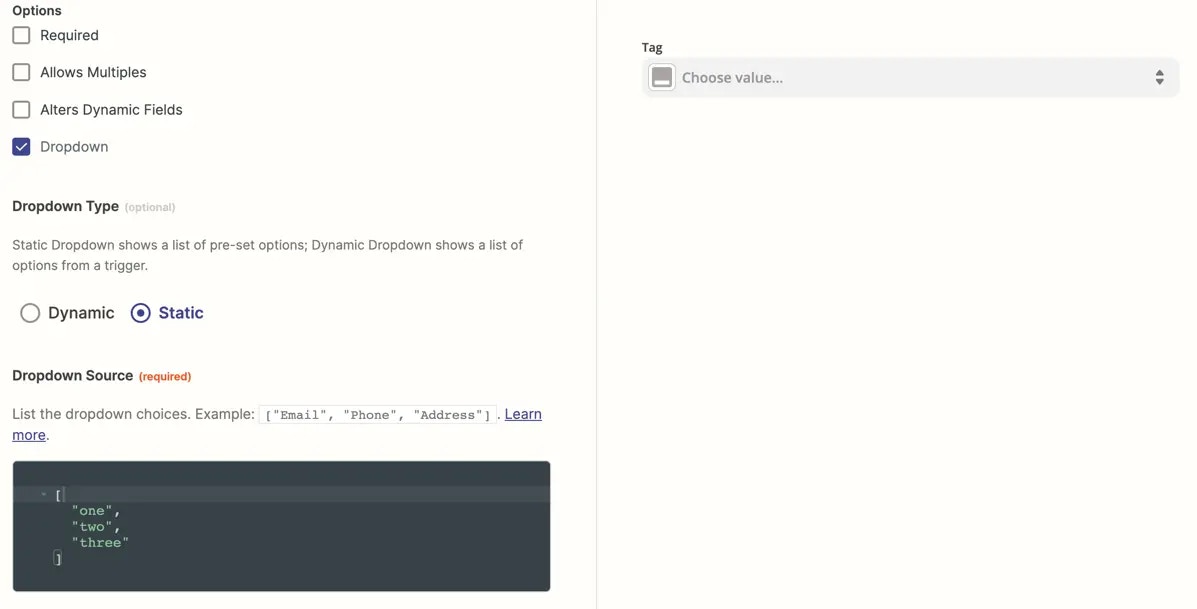
["one", "two","three"]
Enter the fields as used in your API, as Zapier will pass the exact value users select to your app. Zapier will capitalize each item in your dropdown menu in the Zap Editor, and will add spaces instead of any underscores, so an option like first_name would show in the menu as First Name to users.
Static Dropdown with Key Value Pairs
If your API requires different values for the field than the text you want to show to users inside the dropdown menu in Zapier, make a key value pair that includes the value to send to your API, the sample value to show users (should be the same as the value), and a user-friendly label.
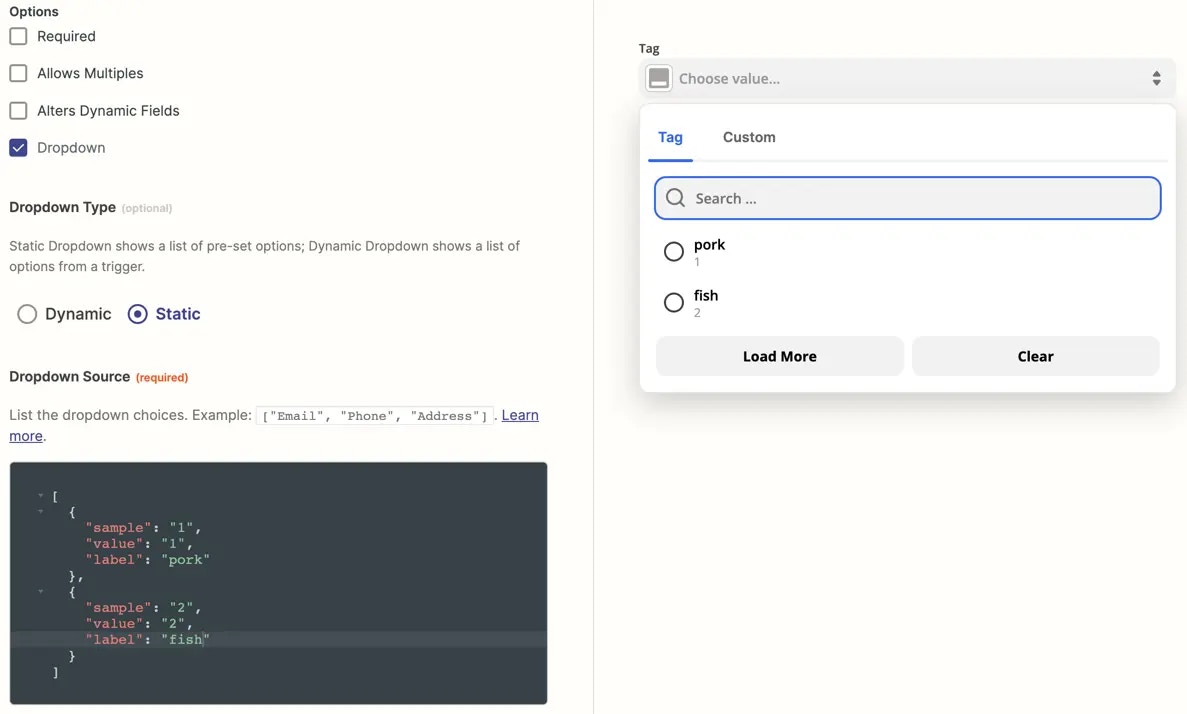
1 or 2, but 1 actually means pork and 2 actually means fish to a user, you could use the following code to add the dropdown menu pictured:
value:label, which shows to users as follows:
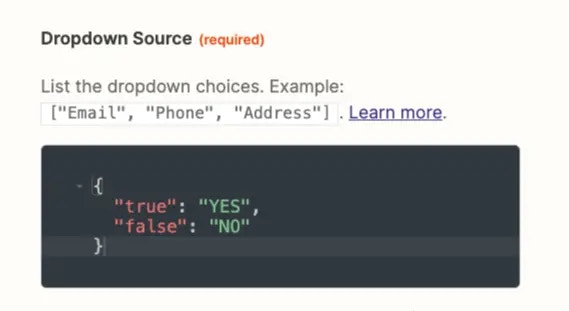
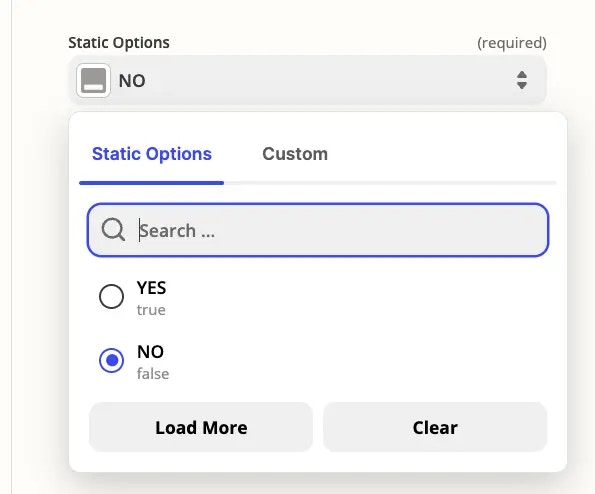
Dynamic Dropdown
If users need to select data from their account in your app — such as a project, folder, team member, or other user-specific detail with a corresponding ID — then you would use a dynamic dropdown. For dynamic dropdowns, Zapier first fetches data from your API and then displays it in a menu. Never make users type in an ID number, rather use this functionality or add a search action to find the ID number automatically. The best way to make a dynamic dropdown is to use a dedicated trigger to fetch the values for the menu. 1. Build a trigger to fetch dynamic dropdown data Create a new trigger, with a key, name, and noun. This trigger is usually configured to not be seen by users but you may wish to include a description for your internal team’s awareness. In the Visibility in Editor field, selectHidden to hide this trigger from your app’s trigger list in Zapier.
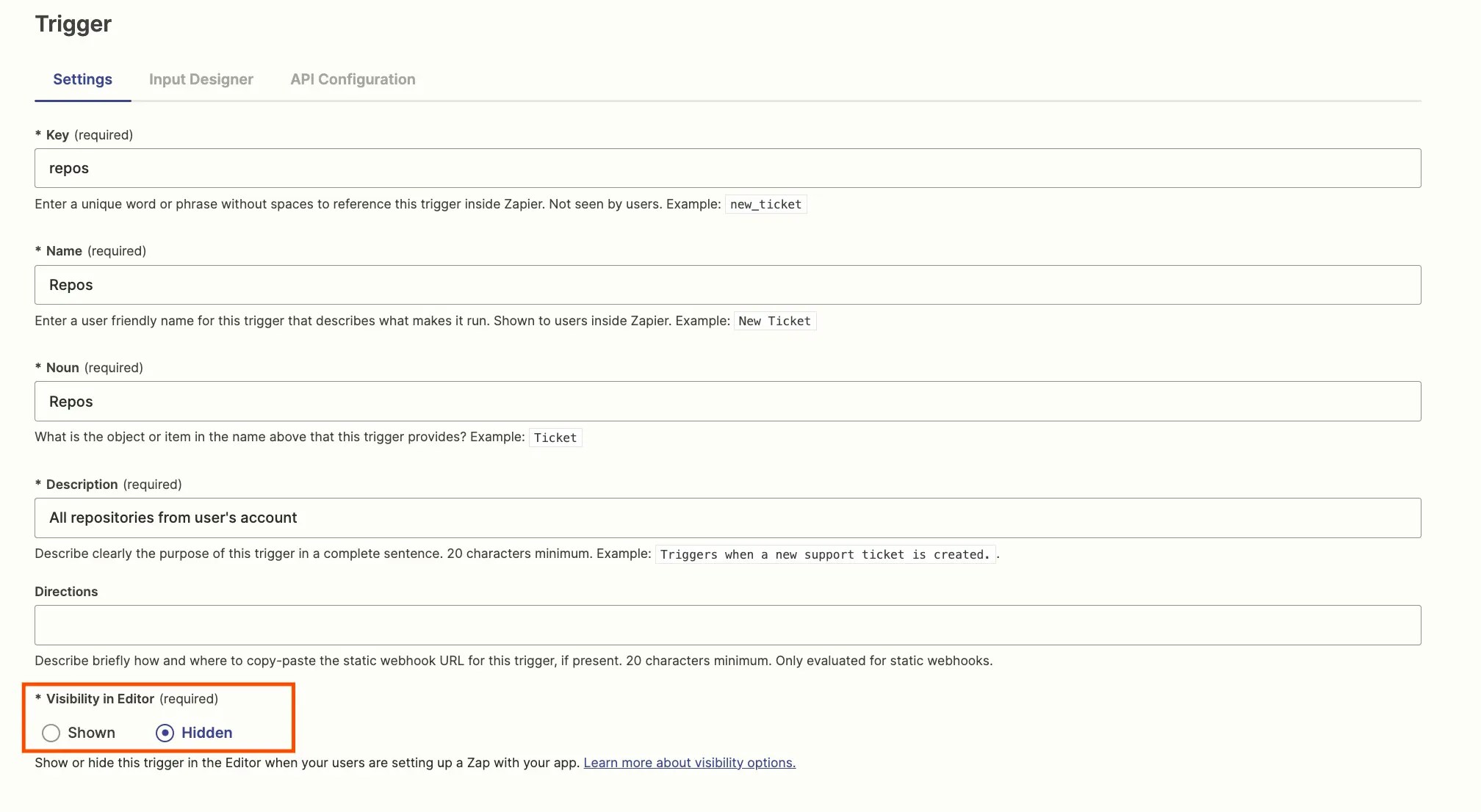
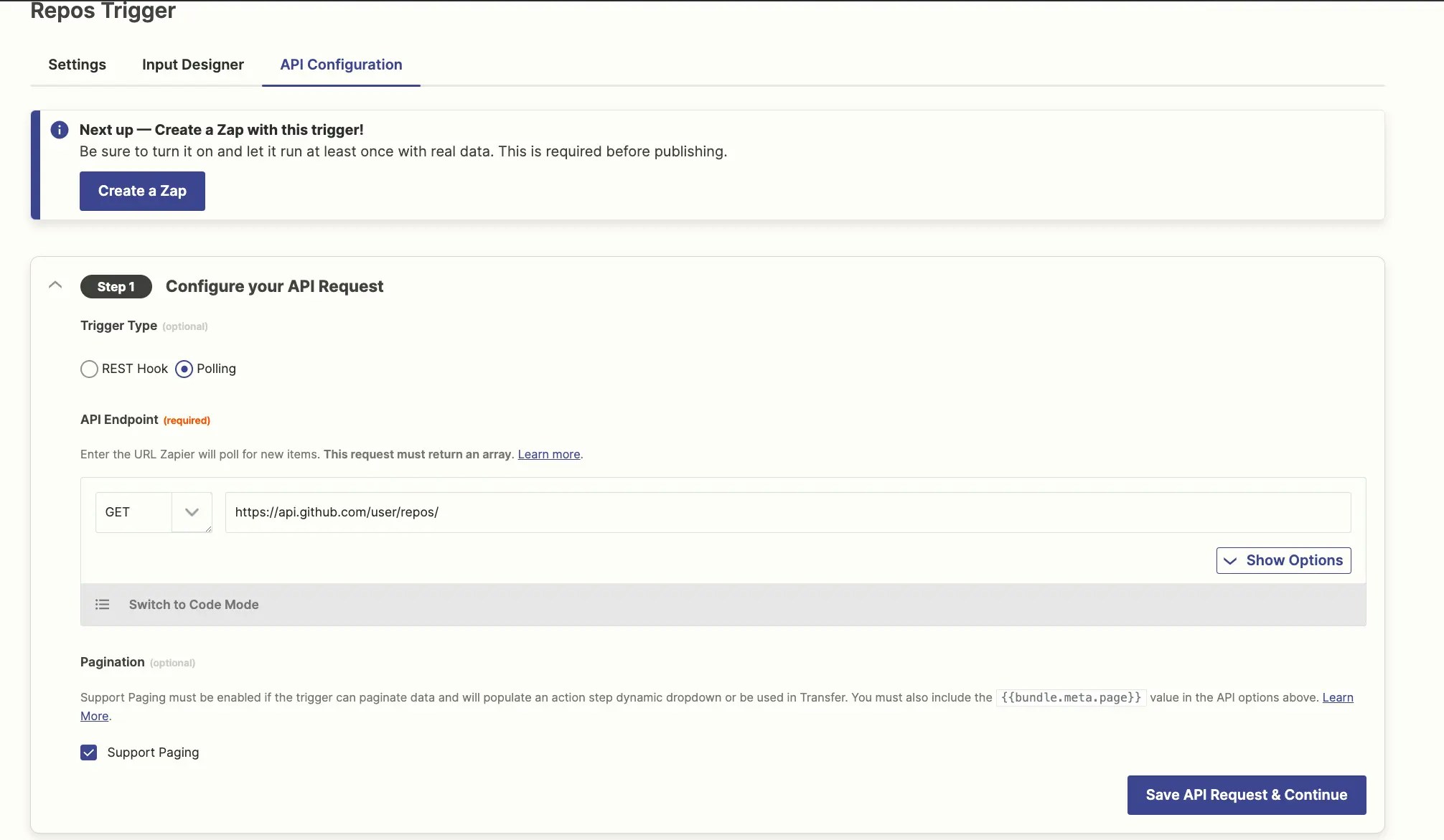
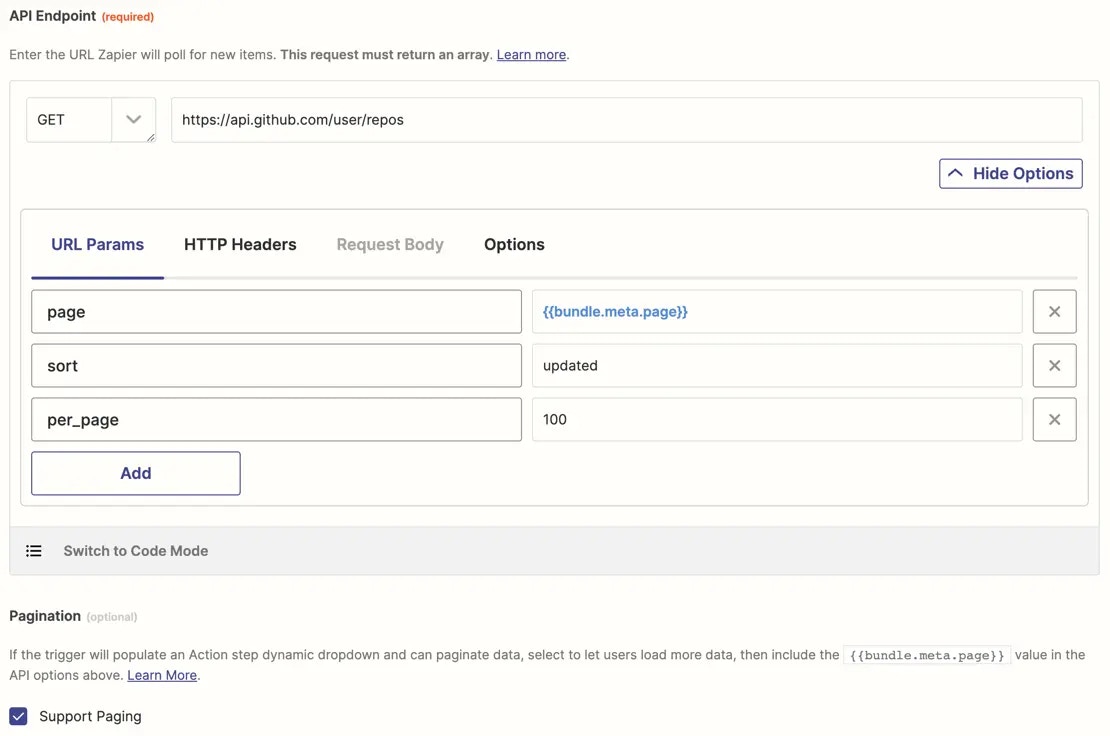
id), along with a field that includes a user-friendly name for the data in that field.
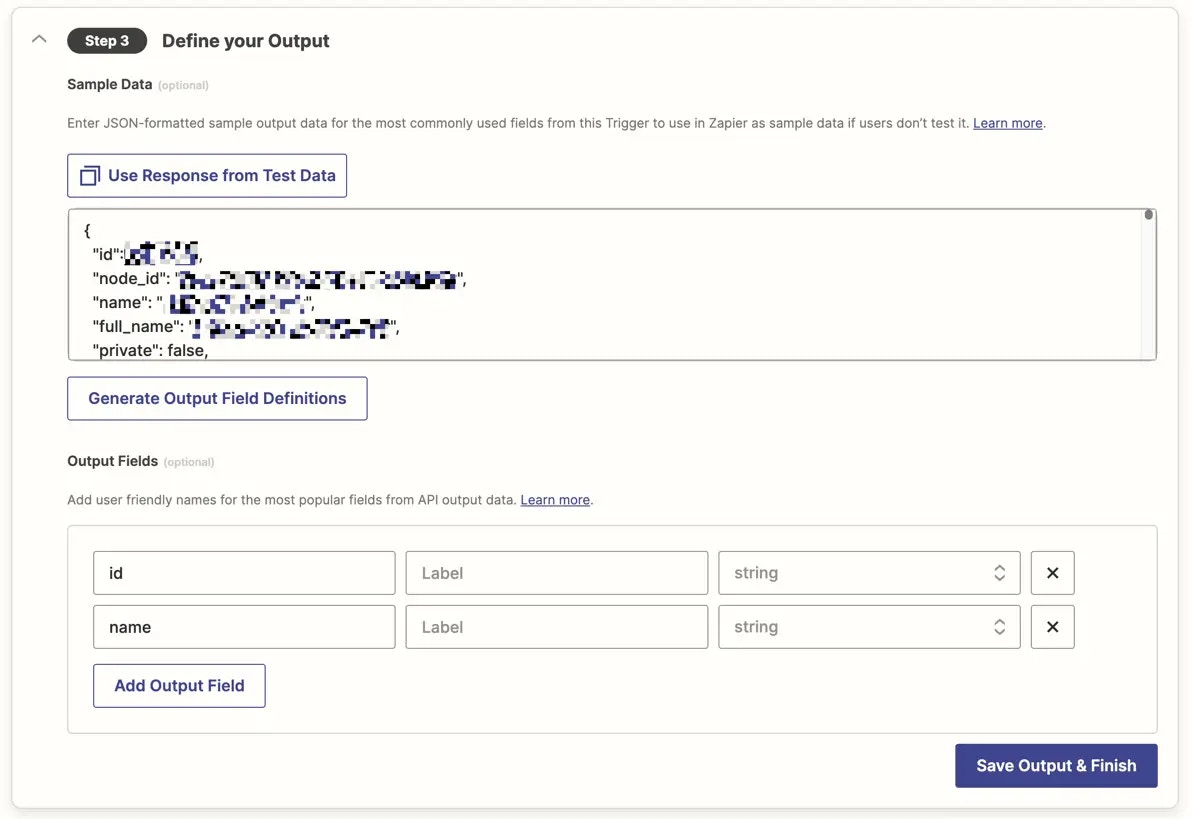
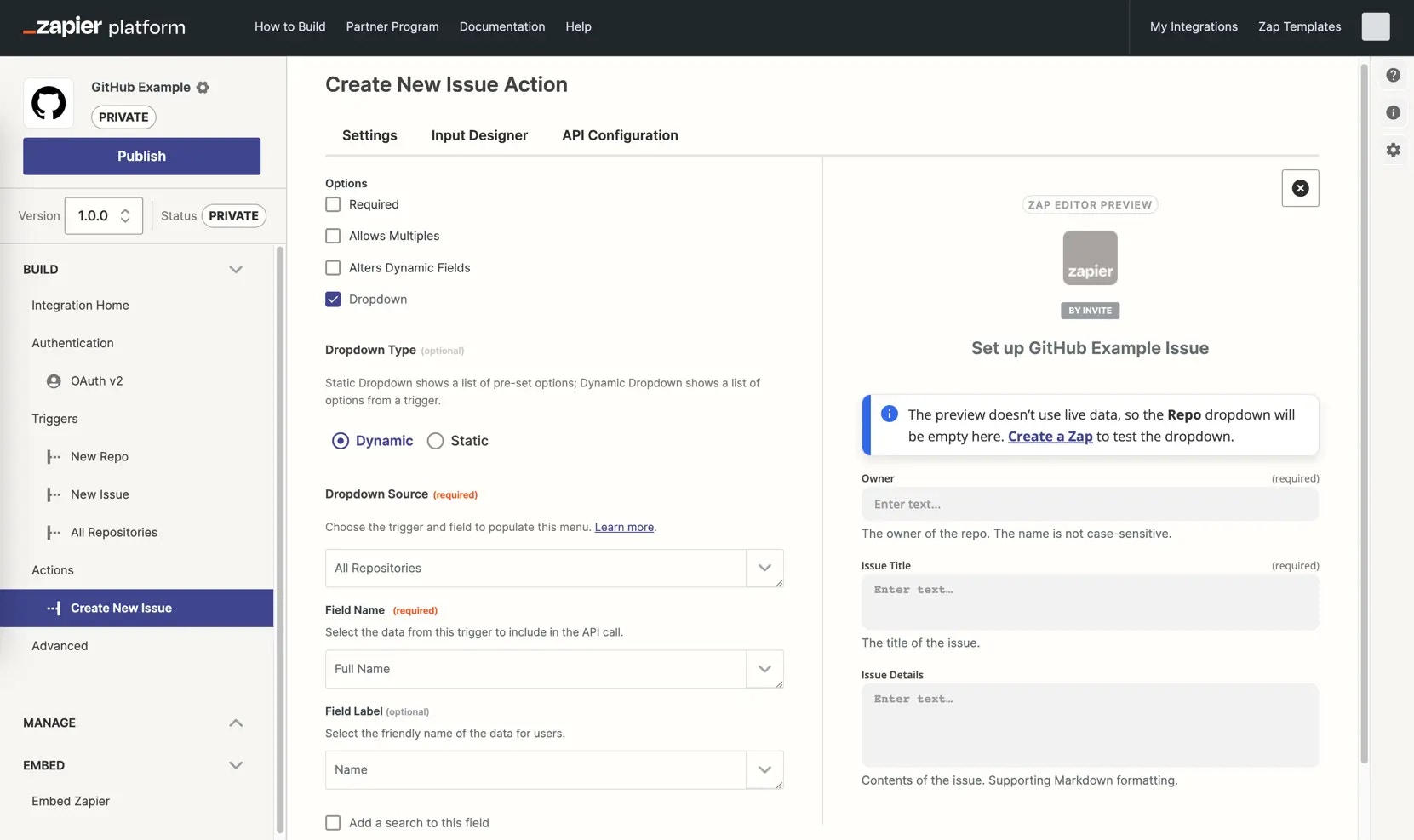
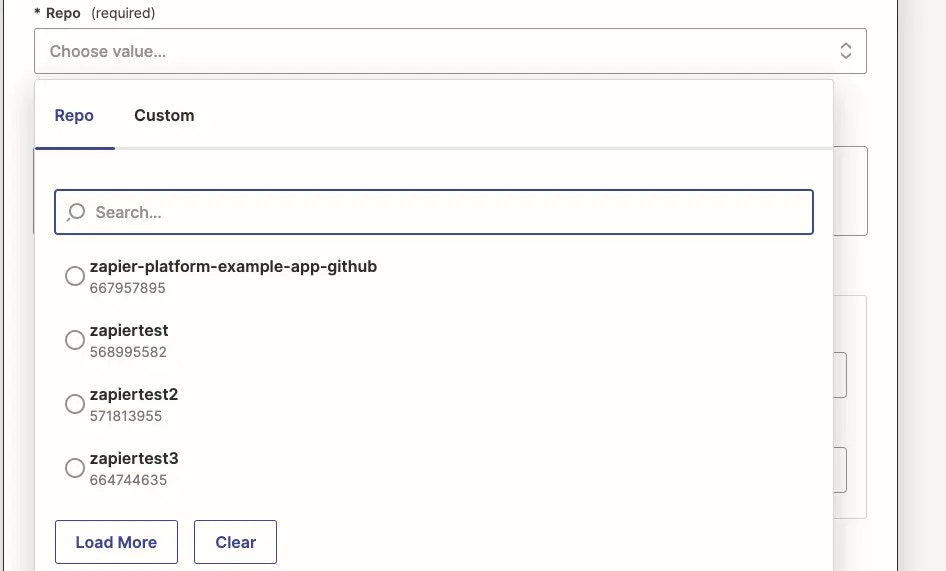
id) for users to know what type of data the field expects. Users can also choose to enter a custom value
and map data from other Zap steps into this field. Being able to see what type of value to map is extremely helpful.
3. Add search to a dynamic field (optional)
Dynamic Dropdown menus can optionally include an additional Add a Search Step button beside the dropdown menu. This lets users dynamically select the correct item from a dynamic field based on input from previous Zap steps.
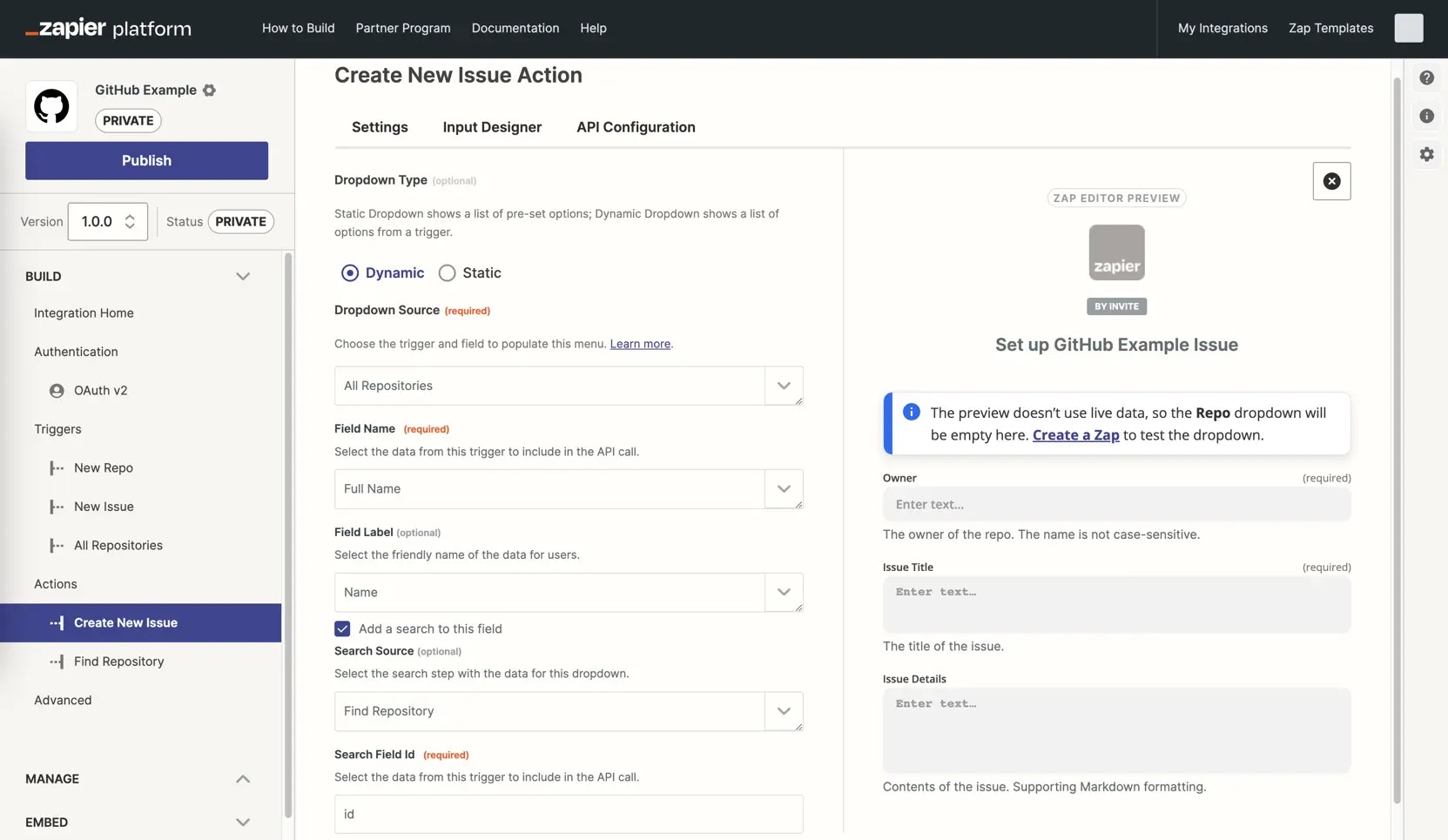
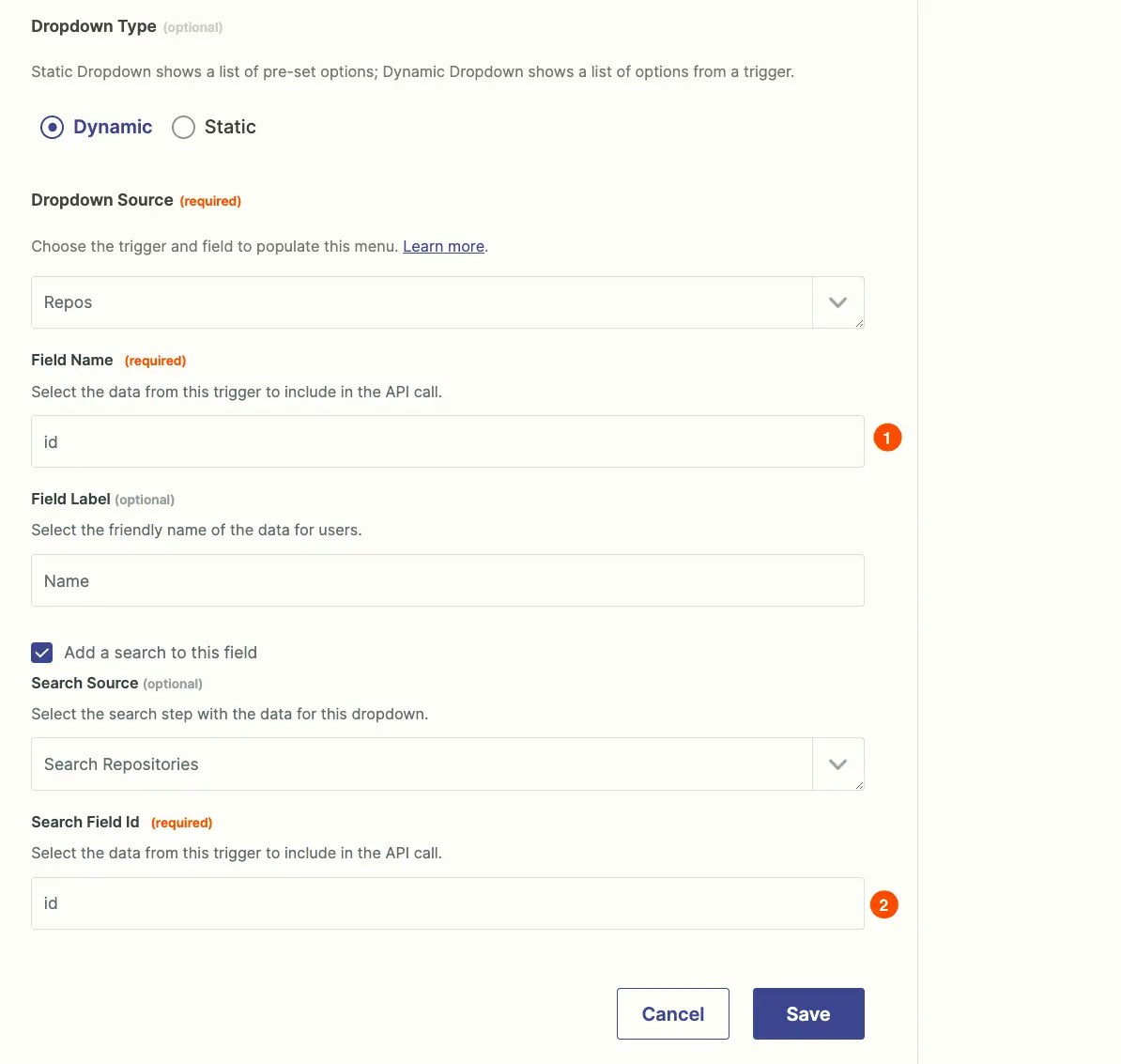
Reorder input fields
Reordering input fields in triggers or actions can help improve readability and usability. List the most important, required fields first, with less important, optional fields near the bottom. Have related fields (such as first and last name) near each other. Ordering fields in Zapier similar to the order of fields in any input forms in your app will increase ease of use.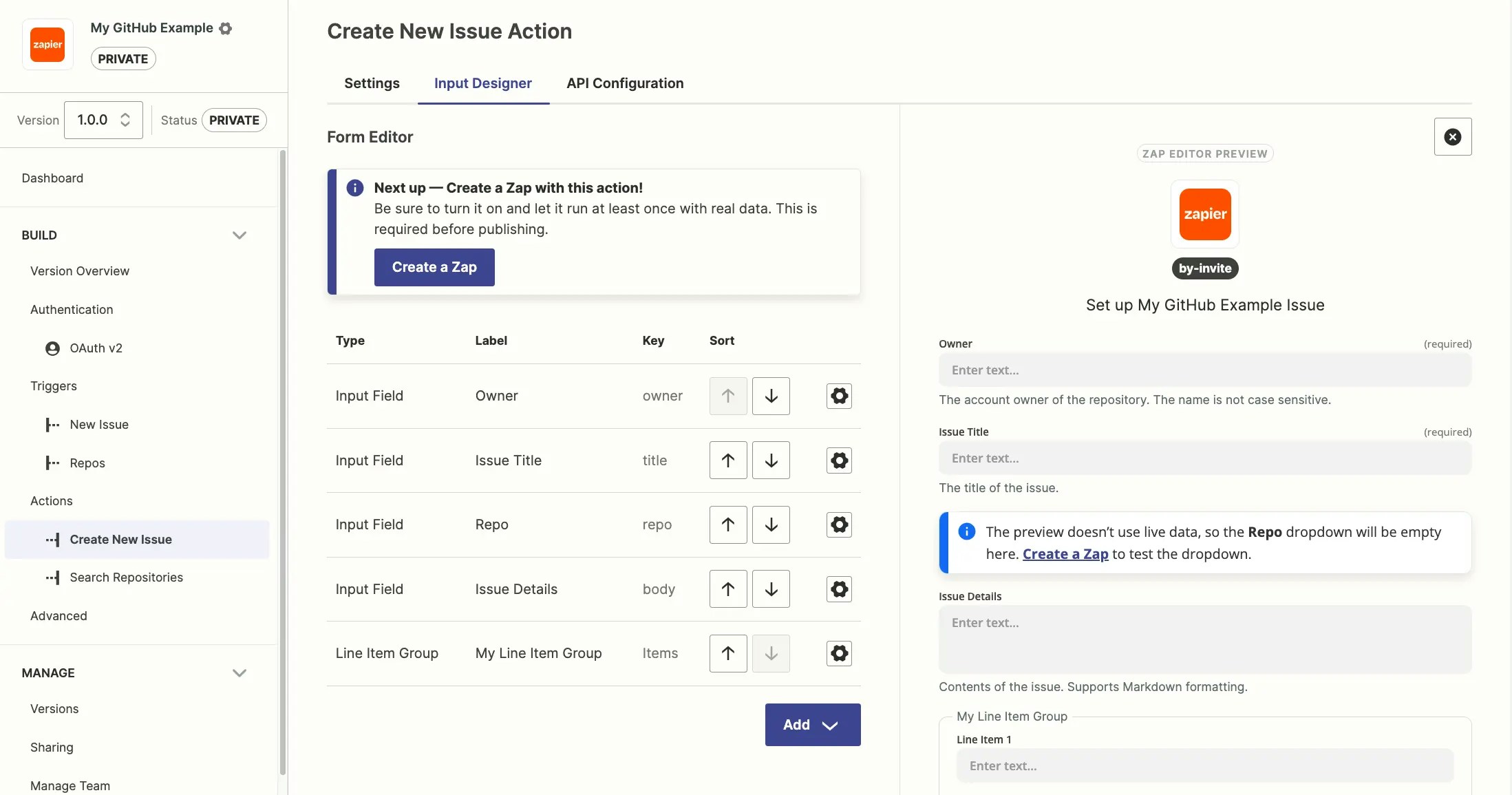
- Click the Input Designer tab.
-
In the Sort column, click the up
or down
 arrow to move the fields to the order you want in the Form Editor screen.
arrow to move the fields to the order you want in the Form Editor screen.
- The preview on the right shows how the finished form looks to users inside Zapier.
- A pop-up message will appear to confirm your changes have been saved.
Remove input fields
Make sure to delete only unnecessary fields, as a previous version of the input form cannot be restored. You cannot remove input fields from public integrations; you must create a new version of your integration before changing input fields and consider the impacts of the change. In your trigger or action settings:- Click the Input Designer tab.
- Click the gear icon beside the input field you want to delete.

- Click Delete.
- Click Confirm to remove the input field from your integration.
- A pop-up message will appear to confirm your changes have been saved.
Need help? Tell us about your problem and we’ll connect you with the right resource or contact support.